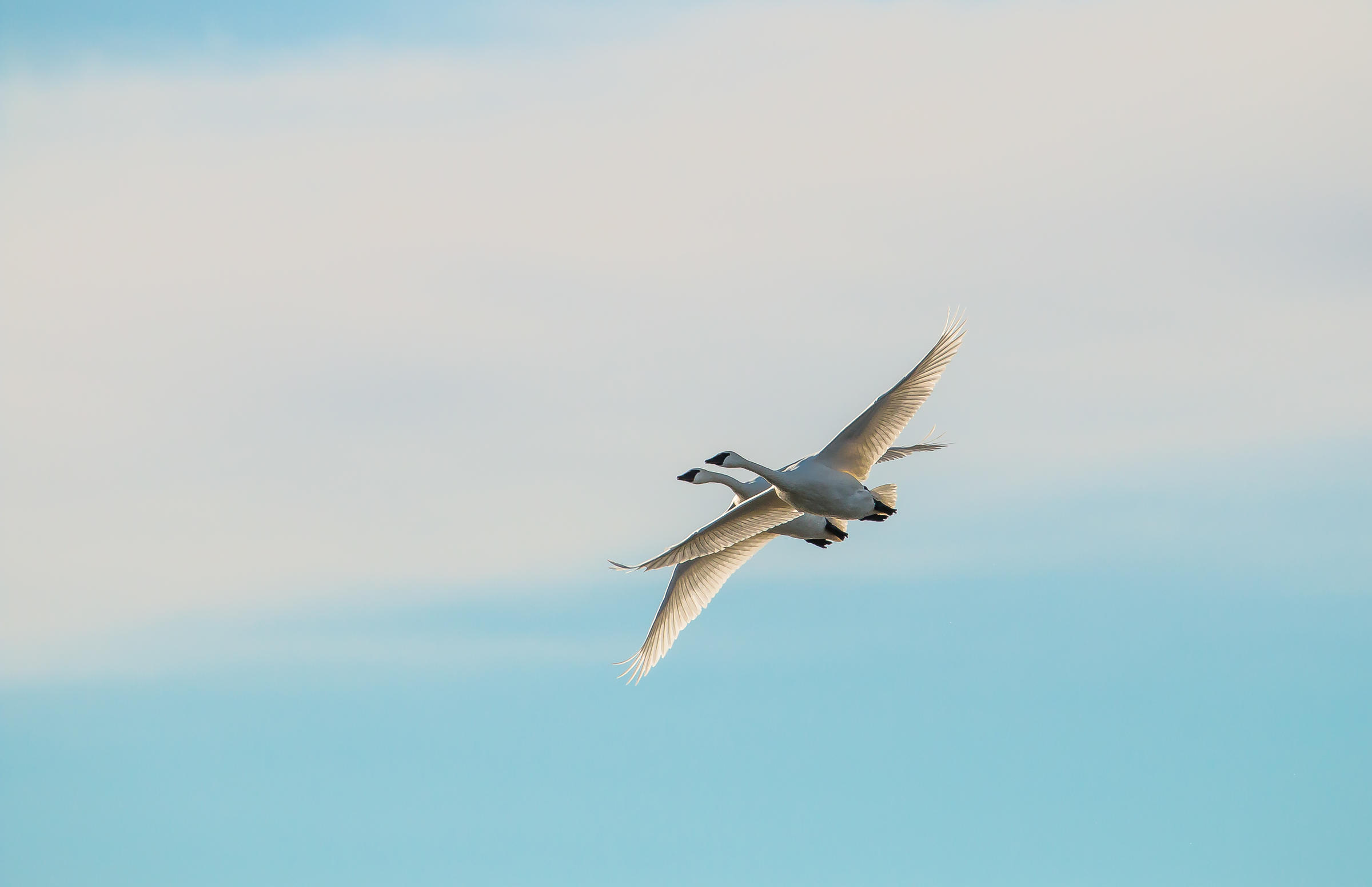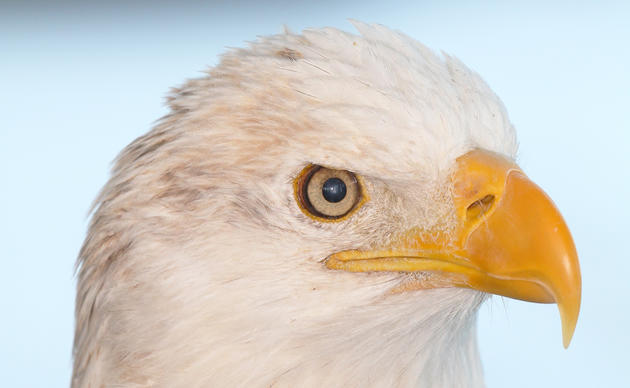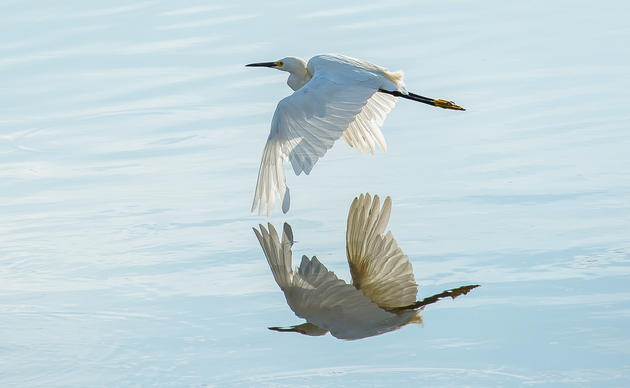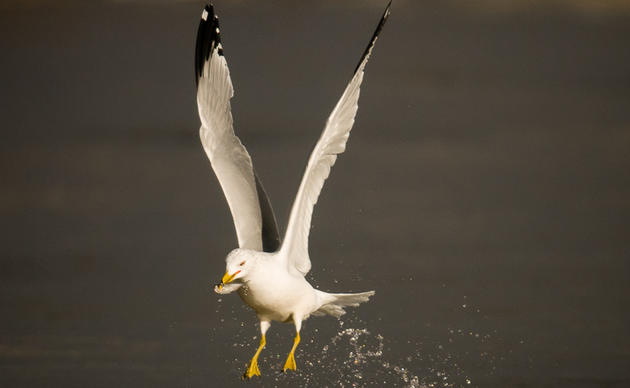The decline of Trumpeter Swans began in the 1700s when people began draining wetlands for agriculture and other development. By the middle of the next century, swans became a target of the millinery trade, their pure white feathers were a prized status symbol for ladies hats. By the early 1900s, these birds were thought to have been hunted to near extinction. While a population remained in Alaska, only 69 trumpeter swans were left in the lower 48, clustered in the Rocky Mountains. In the middle of the continent, along the Mississippi Flyway, the swans had all but disappeared.
Restoration in the 1980s fueled the Trumpeter Swan’s comeback. Natural resource managers and other conservationists began raising Trumpeter Swans using eggs from the Alaskan swans. They released the young birds in Minnesota, Wisconsin, and other Midwestern states. Slowly, their population started to re-establish.
The first Trumpeter Swans made it back to Riverlands in 1991. The next year, a few more arrived. Today, Riverlands is home to one of the largest overwintering populations of Trumpeter Swans in the interior U.S. Community scientists recently counted up to 2,000+ Trumpeter Swans at Riverlands during the annual Great Rivers Trumpeter Swan Watch.
In 2010, Ameren Missouri, with oversight from U.S. Fish and Wildlife Service (USFWS) and the U.S. Army Corps of Engineers, installed 1,000 "swan diverters" on several miles of high-voltage "transmission" power lines that cross the Riverlands Migratory Bird Sanctuary in an effort to protect the Trumpeter Swans. The devices, each about 12 inches long and resembling a giant yellow corkscrew, were installed by workers from helicopters hovering above the Sanctuary. Swans are better able to see the structures and fly over or under them as a result.
In 2011, we launched the Great Rivers Trumpeter Swan Watch, a community science effort to aid in the continued recovery of swan populations. Learn more about the Great Rivers Trumpeter Swan Watch < Link to Great Rivers Trumpeter Swan Watch to its dedicated page.
When and Where to See Trumpeter Swans
Trumpeter Swans typically begin arriving to Riverlands in early November and head back to their nesting grounds in the Upper Midwest by late February. While they can be seen most times of the day at Riverlands during this period, mornings and late afternoons are opportune times for viewing. Trumpeter Swans often leave the Sanctuary by mid-morning to forage for waste crops and other vegetation then return in late afternoon to roost overnight in the Sanctuary. On cold days when the area’s waters freeze, it is common to view them on Ellis Bay from the Center!
How you can help, right now
Programs
The Audubon Center at Riverlands is a great place to bring your classroom or group!
Volunteer With Us!
Riverlands relies on our many skilled and talented volunteers.




